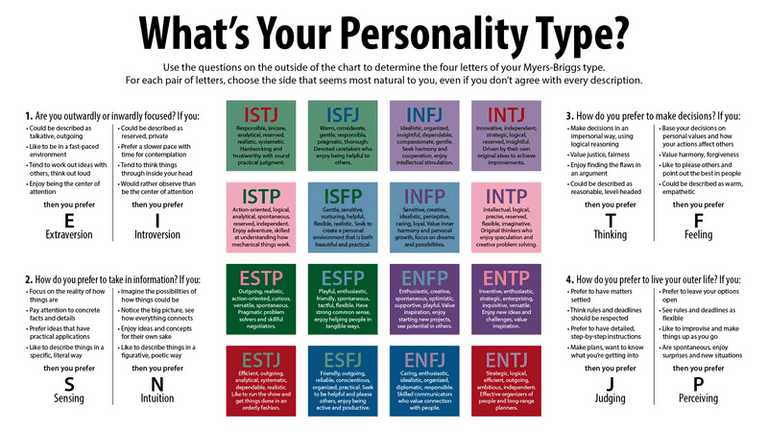Project Leadership and Communications
The instructor, Lismary de Lemos, is a funny and passionate lady who has been coaching the leadership program for a while. I am kind of curious how the soft skills can be taught.
Session 1 - Understanding Communication Preferences
Most people prefers the communication style as being communicated to. Understanding people to gain insights that can help us work together even more effectively. MBTI categorizes the human being to 16 types:
I am ISTJ.
Session 2 - Project Communication
The communication model is defined as:
- Bob encodes his idea and send the message in plain text to Alice
- Alice decodes the message and grasps the idea
- At the same time, Alice acknowledge the message with tone, body language etc
The message is filtered in both sender and receipt sides. Check out the Amy Cuddy’s Ted Talk:
Use the active learning to encourage the conversations.
The communication is so important that the PMO may develop the communication plan for all the stakeholders.
Session 3 - Building the Project Team
Team is a group of people working together to achieve a common purpose for which they hold themselves mutually accountable.
The team building is divided in five phases:
- forming
- storming
- norming
- performing
- adjourning
Session 4 - Managing the Distributed Team
This session is not about the geographically distributed collaboration, it is more about the effective meetings.
Bad habits in the meeting:
- tangents
- wrong people: too many or too few
- poor facility
- time is not respected
- lack of agenda
- dominant person
- lack of participation
- the outcome can not justify the expenses
- just talk the talk, but no traction
Best practise:
- agenda
- action items
- facilitator
- ice breaker
- good visual elements
In the cross-country/culture conversation, Geert Hofstede’s culture dimension theory may contribute to the common ground.
Session 5 - Motivation and Influence
This session is about giving feedback: feedback is specific to the things, not to the people.
The difficult conversation model:
- Facts
- Contribution
- Intention & Impact
- Feeling
- Identity
- Purpose
Session 6 - Problem Solving
Four stages:
- Situation analysis
- Valuing <> Prioritizing
- Problem analysis
- Information <> Definition
- Solution analysis
- Idea getting <> Decision
- Implementation
- Participation <> Planning
In each stage, we have divergent and convergent phases.
Session 7 - Decision Making
Balance the advocacy and inquiry
Heuristics and Biases in Project Management Main Source: Project Decisions: The Art and Science, Virine & Trumper
- groupthink
- causation vs correlation
- escalating commitment
- confirmation heuristic
- planning fallacy
Session 8 - The People Side of Change Management
It is not about the reorg or layoff, it is about the corp culture change.
The transitions are three stages:
- begining
- neutral zones
- ending
Change = Dissatisfaction * Vision * First Steps > Cost of changingSession 9 - Negotiation Skills
Absence due to #celebrate48
This is not about negotiate internet service with Comcast, it is about using interpersonal communication effectively to achieve desired outcomes.
- explore common interests, needs and differences
- reach mutual agreement
Session 10 - Leadership
The leadership is about do right things, the management is about do things right. The leadership in the four phases of team building:
- structuring
- resolving
- collaborating
- validating
Session 11 - Presentations
The game day.
The slides are hosted in Google Drive for personal reference.
